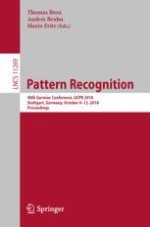This book constitutes the refereed proceedings of the 40th German Conference on Pattern Recognition, GCPR 2018, held in Stuttgart, Germany, in October 2018.
The 48 revised full papers presented were carefully reviewed and selected from 118 submissions. The German Conference on Pattern Recognition is the annual symposium of the German Association for Pattern Recognition (DAGM). It is the national venue for recent advances in image processing, pattern recognition, and computer vision and it follows the long tradition of the DAGM conference series, which has been renamed to GCPR in 2013 to reflect its increasing internationalization. In 2018 in Stuttgart, the conference series celebrated its 40th anniversary.
